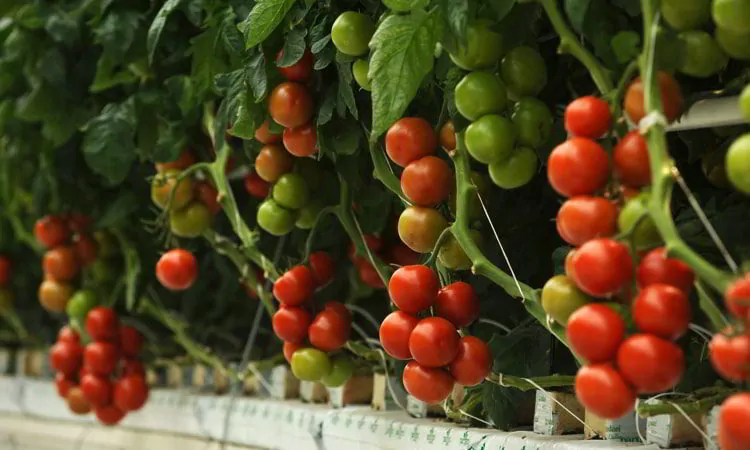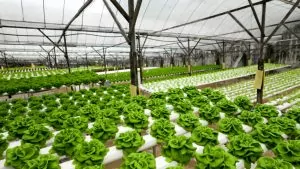
Hydroponic Agriculture: Our Ticket Out Of A Crisis
You Need This In Your Portfolio
One of my favorite Hemingway quotes is:
“How did you go bankrupt?”
“Two ways. Gradually, then suddenly.”
That’s the situation facing America’s oldest industry.
It’s going bankrupt slowly at the moment, but, if the industry doesn’t change radically, the foreclosure will come suddenly.
A vital resource is running low… one that takes thousands or millions of years to accumulate.
The United States will run out of domestic supplies within a generation, as will the other major world powers.
Middle Eastern and North African (MENA) nations have 85% of the world’s reserves of it. China has banned its export because it can see a food crisis looming.
Science magazine called this crisis a bigger threat to the planet than climate change, and you know how much they talk about climate catastrophes.
I’m not talking about nuclear waste, or antibiotics, or plastics.
The crisis that no one seems to have heard about is the collapsing stocks of phosphorous, a simple mineral that we use every day.
Pure phosphorous burns on contact with oxygen, is poisonous to us in many forms, and causes the death of aquatic life through algae blooms.
But we need it.
We need phosphorous for making steel and explosives but also the fertilizer with which 50% of the world’s food is currently grown.
The global population is projected to reach nearly 10 billion by 2050, and this will precipitate a 70% surge in global food demand.
The Issue
Fertilizer use has increased 400% in the last 50 years, and its estimated use will double again by 2050.
Fertilizer prices are at their highest point in a decade because we are running out of cheap supplies of phosphorous to use.
It can be extracted from animal bones and offal, animal manure, and sewage for transport to farms far away, but it’s a messy and time-consuming process.
Not enough waste streams exist to be able to supply our current demands for phosphates through recovery processes.
The U.S. phosphorous mines are mainly in Florida and Utah. China and India have large mines, with smaller deposits scattered around the world.
All three countries will run out of domestic phosphate supply in as little as 50 years, and price rises are not going to stop.
Morocco is home to the largest reserves of phosphate, accounting for 85% of the world’s known supply.
Just as other MENA nations controlled the oil supply in decades past, Morocco could control the global fertilizer mining industry a few decades from now.
I will be looking at all the opportunities Morocco has to offer this year.
Other Challenges Facing Conventional Agriculture Production
- Global water supply will drop 40% by 2030. About 40% of the United States is currently in endemic drought cycles.
- Currently, 25% of global arable land is degraded, meaning it can no longer produce crops consistently due to bad farming practices and over-fertilization.
- Pesticide and herbicide use is harming the population. The 9 billion dollars (and counting) currently awarded to Monsanto’s cancer victims bodes badly for agrochemical companies.
- Gridlocked supply chains highlight the needs for more local food producers.
The solutions are simple.
We need to reduce fertilizer use dramatically and find alternative sources to the ones we have today. Plus, we need to achieve higher crop productivity and rehabilitate degraded soil or learn to farm degraded lands productively.
We need less runoff of chemicals into the environment and less chemical use in general.
We need to stop flying lettuce in from places like Chile in winter and produce food close to where it is consumed.
Lastly, we need to drastically reduce our water consumption.
The good news is that viable solutions are already being implemented quietly around the world. Here’s how to get in on and profit from these world-saving technologies.
The Mother Of All Invention
New agricultural technologies are being brought online and changing things in real time.
With huge advances in robotics, drone technology, and artificial intelligence we are now able to monitor crop conditions exactly, inspect for pests, and harvest crops.
Modern automated greenhouses can shade and cool crops for perfect climate all the time.
One technology above all is being adopted for its impact on long-term food security.
Hydroponics

Hydroponics cuts the requirement for fertilizers by 60% instantly.
It’s a modern concept based on a farming method used by the Aztecs over a thousand years ago.
With hydroponics, plants are grown in nutrient rich water but sit in no soil. It doesn’t matter how bad your soil is because you don’t use soil to grow.
The plants don’t have to struggle to extract nutrients; they just drink to their hearts’ content.
Most operations are in automated greenhouses that control climate, with computers and sensors to optimize conditions.
Increased Yields
Because of this nutrient “free-pouring,” the plants can mature up to twice as fast as field crops. This allows for more crop cycles per year. Whereas an industrious conventional farmer might be able to squeeze 3 lettuce crops out of his field in a year in southern California, a well-managed hydroponics greenhouse can produce up to 11 crop cycles.
Yields per plant can increase up to 100% as well, depending on the crop.
And all this is done with 60% less fertilizer than conventional field methods, as the fertilizer doesn’t wash away and contaminate soil and waterways. Plants grown hydroponically can require as little as 10% of the water that is used to irrigate similar field crops.
This is a huge financial and environmental savings.
Hydroponic farming systems are easily designed to produce organic fertilizers on-site, which makes hydroponics adaptable without cheap-mined phosphates.
Hydroponics requires a higher initial investment than simply planting a field crop but is many times more productive per square meter for decades to come.
Profiting From Chaos
It’s not easy to find a way to invest directly in an emerging trend like hydroponics.
But we have found a rare opportunity to partner with a British group with a long track record in the industry.
Their hydroponics operation is growing so fast that the owners are seeking business partners. Investors pay for greenhouses to be built and the British and local team manages everything from there.
Construction, operation, marketing, sales… they handle it all turn-key.
Your partners operate the greenhouse you legally own and take a modest 15% of the profits as a management fee.
It’s in a tropical country, close to a huge market for its high-quality produce. It offers country and asset risk diversification and great returns.
You start seeing returns within two years with a projected IRR of 16.5% over the next 20 years.
In fact, early investors will be collecting their first payments this month.
If you’d like to learn more about this hydroponics investment, you can get in touch here.
Con Murphy
Editor, Overseas Property Alert



